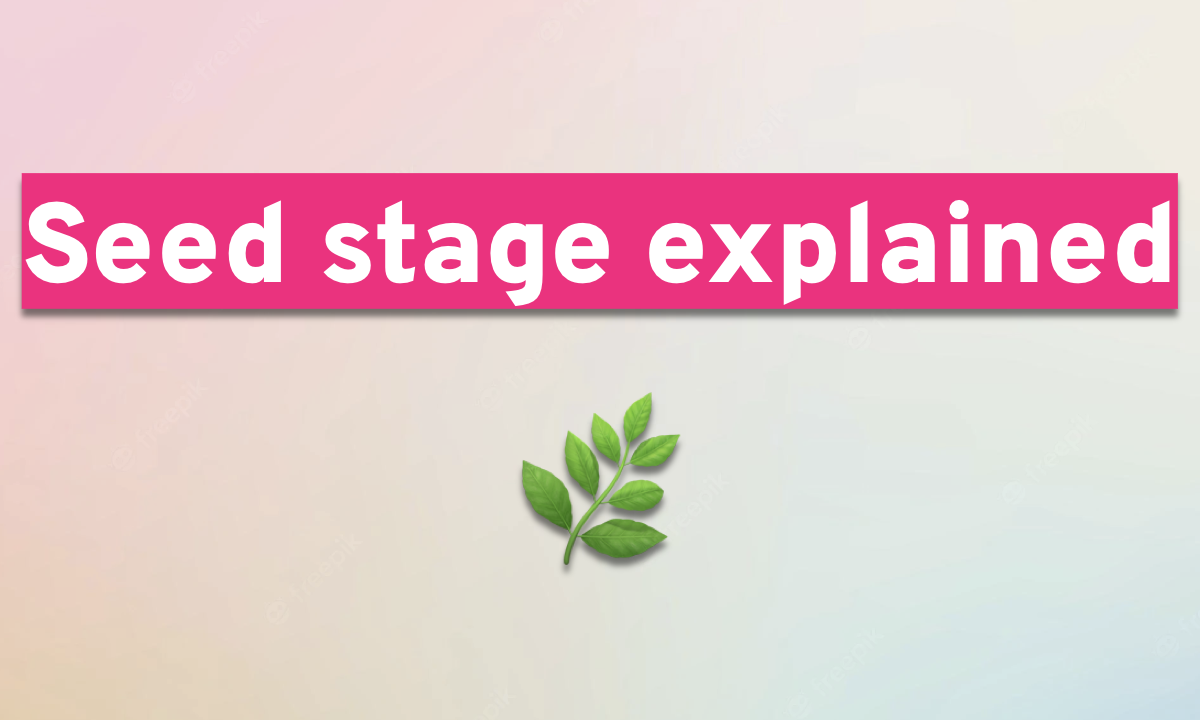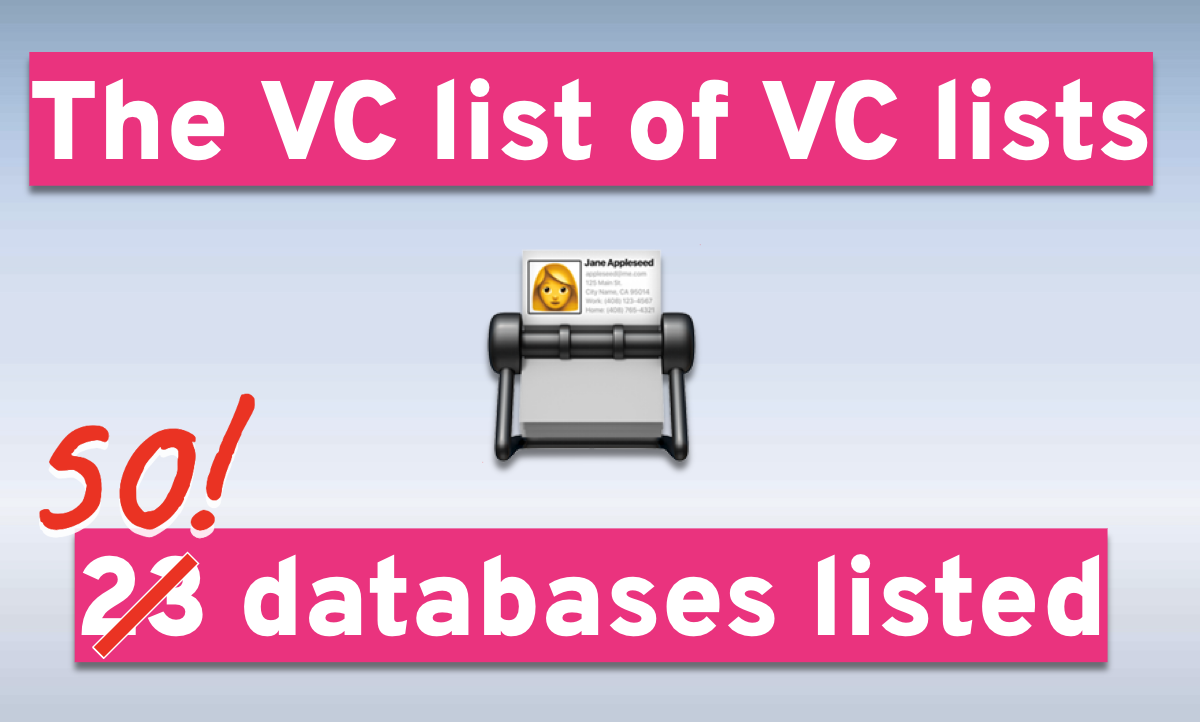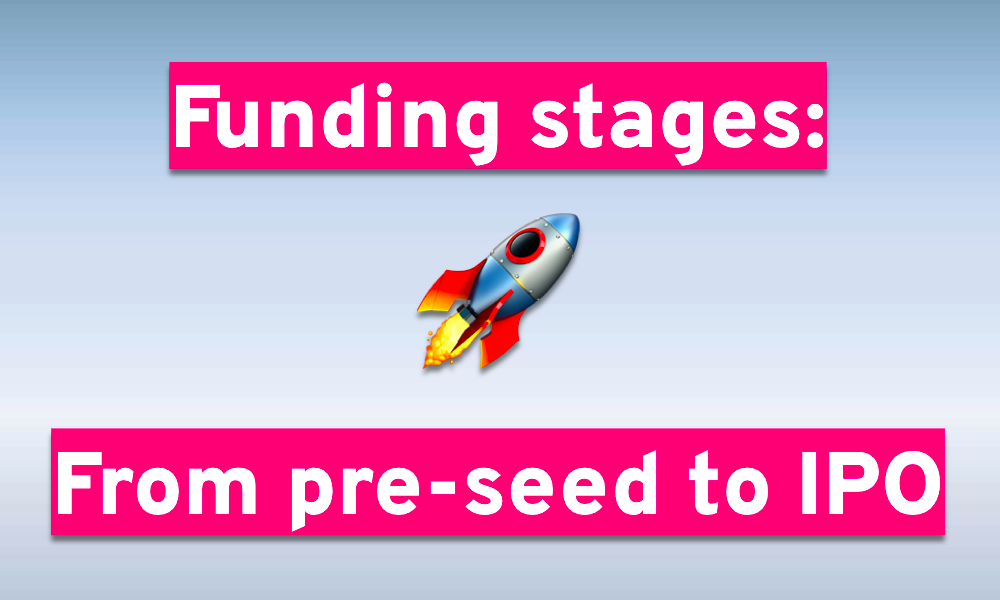You have been working away on your startup for longer than you care to admit. You transformed what was a weekend side hustle to a real company, one that actually hit milestones and has key metrics to back up your wild claims. You bootstrapped for what felt like forever, found your first angel investor (thanks grandma), and actually raised a pre-seed round from reputable investors who believed in you.
What’s next?
The seed stage.
The term comes from the fact that the capital invested during this round will transform the business from a tiny seed into a mighty and healthy tree. At least that is what the founder and investors hope will happen.
This article aims to help you avoid the wasteland of startup failures by having you understand everything you need to know about the seed stage. For a full list of funding stages, you can read our post on it here.
It’s time to plant, let’s begin.
Table of Contents
What exactly is the seed stage?
The seed stage is often referred to as the first official fundraising stage. Or if you want to get technical, Crunchbase defines it as “the first rounds of funding a company will receive, generally while the company is young and working to gain traction.”
Like the pre-seed round, investors may include friends, family, and angels. However, venture capitalists are a more viable option in this round.
Why?
Because seed stage companies are more mature than their angel and pre-seed counterparts. For the first time, they are ready for "institutional investors".
In fact, some of the biggest VC firms have dedicated seed funds. This includes big names like Khosla Ventures, Greylock, and Andreessen Horowitz.

Are you ready for a seed round?
At the seed stage, the company should not only have their minimum viable product (in beta with actual users, leave the alpha and prototype to the bootstrap and pre-seed stages), but should have also clearly demonstrated that it works and that there is a demand for it. I.e. you should have found Product-Market Fit.
There is revenue, traction, signs of increasing growth (signups, user registration, demand from vendors and/or enterprise clients), and the team and key personnel are in place. More importantly, the startup should have a compelling argument on why they are the solution to the problem that they are attempting to solve.
In other words, not just hopes, plans, and unrealized dreams.
While there is no way to accurately tell if you are ready for a seed round, here are a few questions founder’s should have answers to, especially when approaching investors.
- Is the story compelling?
- How strong is the product/market fit: retention, growth, usage?
- Can the company effectively compete on its core use case?
- What is the monthly revenue? This can be calculated as MRR (for SaaS), GMV (for ecommerce, marketplaces), GTV (for fintech), etc.
- What is the burn rate? How much money does the company burn through each month?
- What is the runway? How long can the company last with X amount raised?
- Can the founding team deliver on its goals?
- Are the market and opportunity real and sufficiently large?
- Is there one clear predictable, repeatable distribution channel?
Who invests in seed rounds: VCs, angels, and more.
Once deemed too early or too risky, seed stage companies are in vogue. Khosla was a seed stage investor in GitLab, InstaCart, DoorDash, and QuantumScape while Andreessen Horowitz made seed investments into Stripe, Lime, and Robinhood.
In 2022, Tiger Global has made over 18 seed deals globally and Andreessen Horowitz has over a dozen, according to Crunchbase.
But why do investors want to get in at the seed stage of a startup?
Simple.
The lead investor of a seed round is usually the first to get a board seat. It allows them to have an influence and a vote in paramount decisions at an early stage of the company. Seed investors may also get pro-rata rights, which gives them the right to invest in the next round or rounds next to the new investors. If your company is successful, this is a valuable option for investors who like to "double down" on the winners.
But venture capitalists aren’t the only people to approach in order to raise a seed round. Other sources of seed funding include:
- Angel Investors. Like the pre-seed stage, angel investors continue to play a pivotal role during the seed round, especially the bigger ones dubbed as "super angels".
- Angel Networks. Platforms such as AngelList allow angel investors to come together in a syndicate or SPV and provide capital as part of a group. For founders who need a small seed round, this may be the perfect solution to help them grow.
- Accelerators. Accelerators allow early stage startups to grow and provide not only funding, but networking, guidance, mentoring, and even a workspace. They take a small amount of equity in return for their services.
- Venture Debt. Venture debt is a loan to an early stage company that provides liquidity to a business for the period between equity funding rounds. This allows the company to have cash on hand for growth, hiring, and unforeseen issues. It is not a long term solution as the loan is often repaid within eighteen months (with interest). Banks that work with and understand the complexity of startups are often the right fit for venture debt.
- Corporate Seed Funds. Large corporations across the world have seed funds that invest in companies within their wheelhouse. For example, Maersk invests in companies with a logistics focus while Airbus Ventures focuses on deep tech companies in the sustainability sector.
- Anyone with an interest via crowdfunding. There are hundreds of crowdfunding platforms with different qualifications. Some require accredited investors while others allow anyone with an account to invest. They are a popular source of seed funding as founders get exposure and can not only raise funds via equity, but also by providing rewards as an incentive.
- The founders themselves. If the founders can afford to do so, they can continue to use their own personal savings to fuel their business AKA "skipping the seed rounds". This allows them to maintain control of their equity and avoid taking on any debt. Companies such as Spanx and Mailchimp continued to bootstrap their way to successful exits.
Seed valuations range from $4M to $20M in the US
The valuation of a seed stage startup varies. Seed valuations of U.S. startups typically range from $4-20 million with check sizes varying between $1M to $5M.
Checks are occasionally getting bigger, with many companies raising “supergiant” seed rounds. Yugalabs raised a $450 million seed round while Canadian fintech Fraction raised a CAD $219 million seed round. That's what we call the Pool Party effect.

But before you get too excited, most companies never make it past the seed stage. These supergiant seed rounds just provide more capital to burn through as they fall.
It also should be noted that smaller seed rounds are typically raised via SAFE notes (like a pre-seed round) while larger seed rounds are classic priced rounds (like a Series A).
To learn more on seed valuations, see here.
How long does the seed round last?
Although there is no set time limit, the seed round should take up to 6 months to complete and raise funds. This is also dependent on the founding team, their relationships, and previous startup history - including any significant exits.
Uses of seed capital
The use of proceeds from a successful seed capital raise will differ depending on the need and nature of the startup. In most cases, it will be used to make additional key hires, increase marketing, expand market share, further product iteration, extending the runway, lowering costs, obtaining critical facilities or equipment, and ultimately to continue to fuel and grow the business.
Here's how Transferwise described their use of funds in their seed deck in 2011.
Seed VC funds
Here at OpenVC, we currently have 3,000+ funds on our platform who invest at the seed stage. With check sizes averaging $1M, connecting with the right investor for your startup just got easier. Some of these funds include:
- Contrarian Ventures
- Bluestein Ventures
- Story Ventures
- Vera Equity
- StartFast Ventures
As always, make sure that your company fits their investment thesis before submitting your deck.
Conclusion
The seed stage is where most companies come to die. But it is also where companies can grow, mature, and truly shine. By making it to the seed stage, you are proving that the opportunity is there. Not only is your team counting on you, but so is your 7th grade lab partner who invested in the earlier round.










